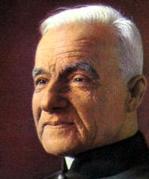Make your gift today!
Help keep Catholics around the world educated and informed.
Already donated? Log in to stop seeing these donation pop-ups.
Synod, October 17: Vatican spokesman mentions ‘reinstatement of female diaconate’
October 18, 2023
On October 17, participants in the first session of the 16th Ordinary General Assembly of the Synod of Bishops discussed working groups’ reports on the Synod’s third topic: “Co-responsibility in Mission: How can we better share gifts and tasks in the service of the Gospel?” (module B2).
The confidentiality surrounding the reports of the working groups has helped make the current Synod the least transparent one in recent decades. During the pontificates of St. John Paul II and Pope Benedict XVI, the Vatican routinely published the Synod fathers’ interventions (speeches). Under Pope Francis, that practice ceased—significantly decreasing transparency—but the Vatican still published the reports of the working groups. The current Synod’s rules forbid participants to discuss even their own interventions.
As a result, the daily press briefing, led by Paolo Ruffini, prefect of the Dicastery for Communication, is the principal source of information about what is transpiring in the Synod.
Press conference
Ruffini and other participants in the October 17 press conference said that the following topics were being discussing:
- the role of women, including the possibility of the ordination of women to the diaconate
- the “fatherly” ministry of bishops
- the contribution of the laity
- changes to the Code of Canon Law
- “how to overcome clerical models that impede communion or that can impede the communion of all the baptized”
- lay ministries, which “are not stopgaps for the lack of priests” and “should not be clericalized”
The potential changes to canon law would speak of the “co-responsibility” of the laity rather than the “cooperation” of the laity.
“The law itself of course can change when the needs of the Church” have changed, said Bishop Anthony Randazzo of Broken Bay (Australia). He added that aspects of the law “can be adapted according to the needs of particular communities and situations and circumstances.”
Women’s ordination
In addition, participants discussed the nature of the diaconate, and, in Ruffini’s words, the “reinstatement of the female diaconate.”
“It was recalled that Jesus associated women with His retinue,” said Ruffini. “The question was raised whether it might not be possible to envisage that women, who gave the first proclamation of the Resurrection, might not also give homilies.”
“It was also said that when women are present in the pastoral councils, decisions are more practical and communities more creative,” added Ruffini. “When you want something to be talked about, have an assembly of men, but if you want to do something, have an assembly of women.”
Renee Kӧhler-Ryan, Dean of the School of Philosophy and Theology at the University of Notre Dame Australia, also took part in the press conference. She described women’s ordination as a “niche” issue.
“As a woman, I’m not focused at all on the fact that I’m not a priest,” she said. “I think that there’s too much emphasis placed on this question.”
“And what happens when we place too much emphasis on this question is that we forget about what women, for the most part, need throughout the world,” she continued. “I want them to have a future, and a future where they are welcomed into the Church, and everyone they know and love is welcomed into the Church.”
Participants in the press conference also spoke about digital communication.
“We have universal teaching, and we’re really trying in many different ways to reach out to those who might not know about Christ and His Mother and our Church,” said Kӧhler-Ryan.
Earlier coverage
- Synod of Bishops publishes retreat texts
- Pope at Synod’s opening Mass: Let us walk with the Holy Spirit
- Synod, October 4: Pope emphasizes role of Holy Spirit; Cardinal Hollerich calls for ‘new insights’
- Synod, October 5: ‘Expert-facilitators’ guide discussion; final report will form agenda of 2024 Synod session
- Synod, October 6: discussion of 1st topic nears close; Vatican spokesman says participants may speak with media
- Synod, October 7-8: working groups submit first reports; leading African cardinal emphasizes listening, discernment
- Synod, October 9: participants turn to new topic; Orthodox prelate draws sharp contrast between Eastern synodality, current Synod
- Synod, October 10: participants discuss 2nd topic, elect members of key commission
- Synod, October 11: some participants call for ‘greater discernment’ of Catholic teaching on sexual morality
- Synod, October 12: participants pray for peace
- Synod, October 13: Cardinal Hollerich asks participants to set aside their own thinking, listen to others
- Synod, October 14-15: presiding sister says Synod is ‘setting the stage for future changes’
- Synod, October 16: women’s ordination to diaconate, LGBTQ ‘woundedness’ gain greater prominence
For all current news, visit our News home page.
All comments are moderated. To lighten our editing burden, only current donors are allowed to Sound Off. If you are a current donor, log in to see the comment form; otherwise please support our work, and Sound Off!







